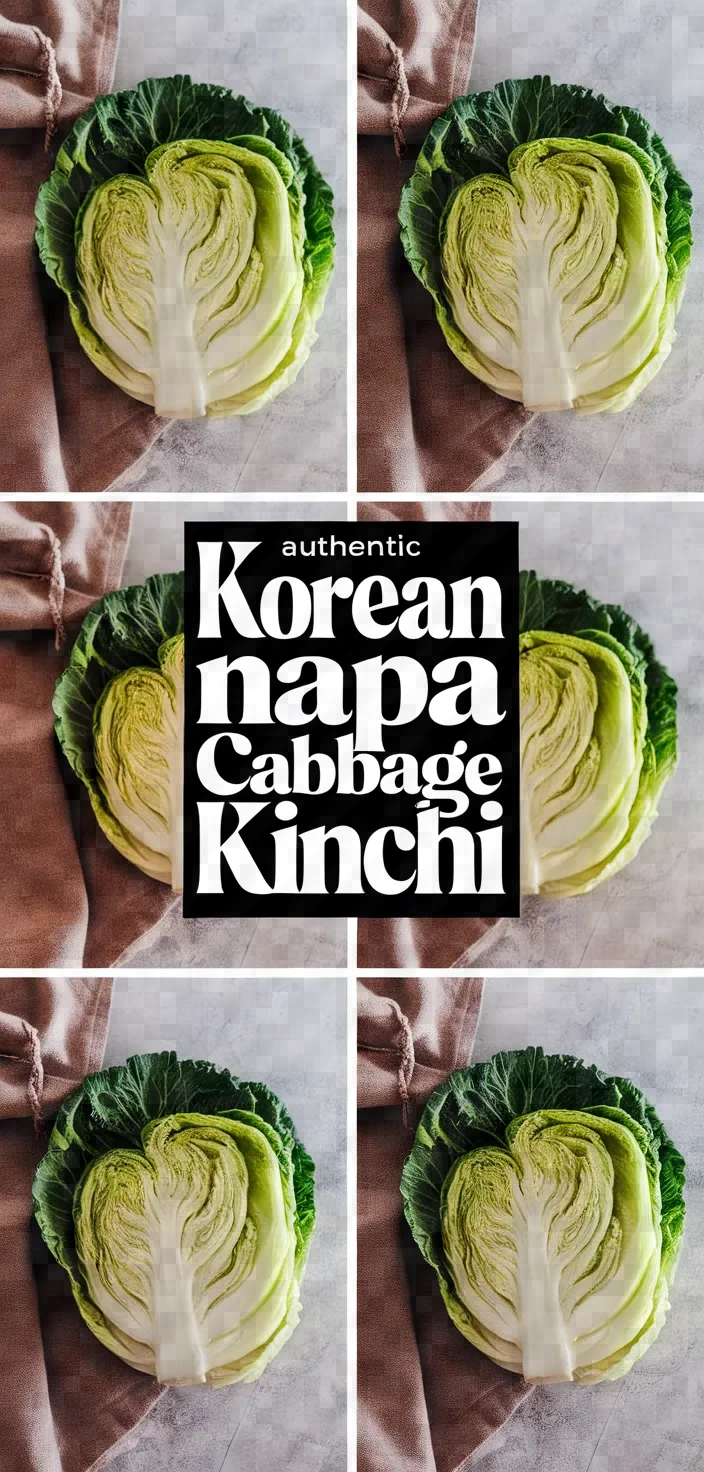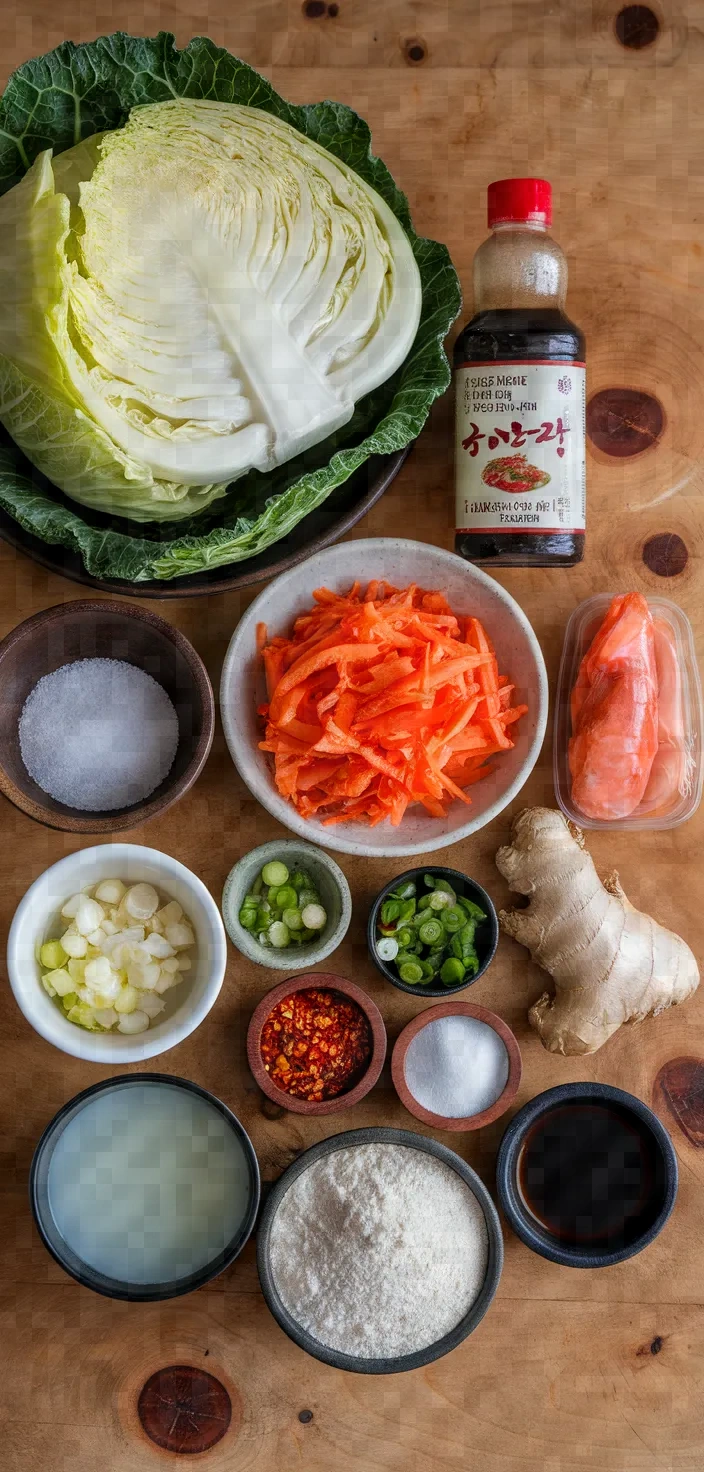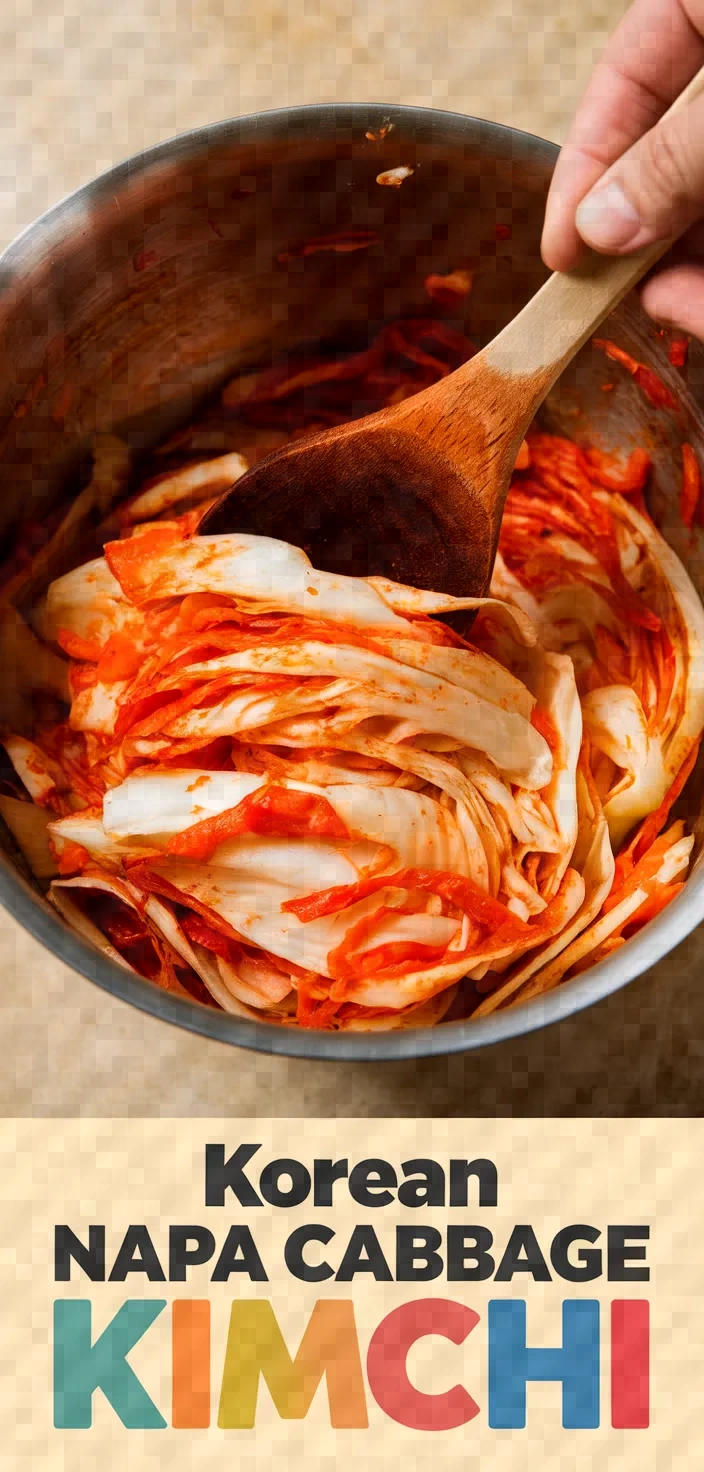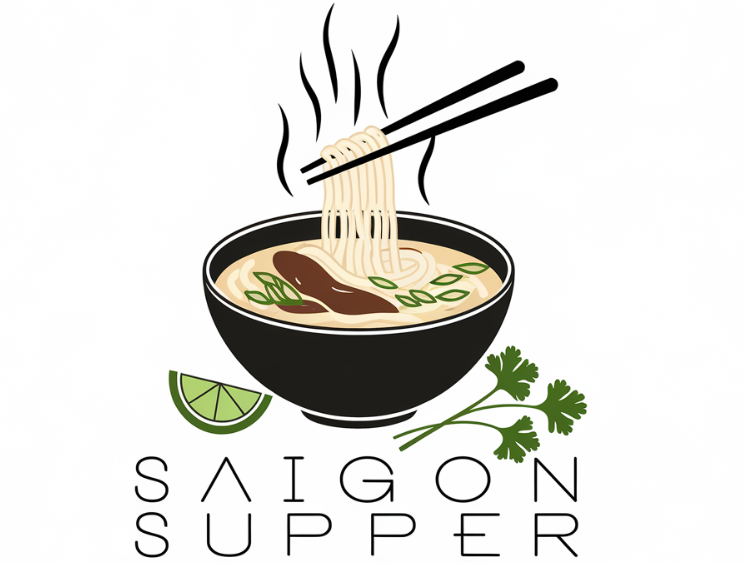There’s something almost magical about letting a bunch of veggies and spices hang out together until they transform into the vibrant and tangy marvel that is kimchi. It’s like a science experiment you can eat—and trust me, you won’t want to stop once you start mixing up this spicy, crunchy, and oh-so-satisfying batch!

I enjoy preparing genuine Napa Cabbage Kimchi from Korea in my kitchen. The union of the crisp Napa cabbage with the intense flavors of gochugaru, fish sauce, and minced garlic results in a deliciously multifaceted taste.
Adding daikon radish and green onions not only intensifies the flavor but also contributes a stunning amount of nutrition.
Authentic Korean Napa Cabbage Kimchi Recipe Ingredients

- Napa cabbage: Rich in fiber and vitamins, it aids digestion.
- Korean red pepper flakes (gochugaru): Adds spice, rich in vitamin C and antioxidants.
- Fish sauce: Provides umami flavor and protein.
- Salted shrimp (saeujeot): Adds salty flavor, enhances taste with umami.
- Daikon radish: Low-calorie vegetable high in vitamin C.
- Garlic: Boosts immunity with allicin, offering antibacterial benefits.
- Glutinous rice flour: Thickens, adds subtle sweetness and smooth texture.
Authentic Korean Napa Cabbage Kimchi Recipe Ingredient Quantities
- 1 large Napa cabbage (about 2-3 pounds)
- 1/4 cup sea salt or kosher salt
- 4 cups water
- 1 small daikon radish, julienned
- 5-6 green onions, chopped
- 1/4 cup Korean red pepper flakes (gochugaru)
- 1/4 cup fish sauce
- 2 tablespoons salted shrimp (saeujeot), finely chopped
- 1 tablespoon minced garlic
- 1 teaspoon grated ginger
- 1 tablespoon sugar
- 1 tablespoon glutinous rice flour (sweet rice flour)
- 3/4 cup water (for rice paste)
How to Make this Authentic Korean Napa Cabbage Kimchi Recipe
1. Slice the Napa cabbage in half down its length, and then slice each half again in half, so you have four pieces. Remove the core from each piece. Chop the Napa cabbage into pieces that would be roughly the size of a 1-inch cube. Of course, if you like, you can make your pieces bigger or smaller. Throw the pieces into a large bowl.
2. Dissolve 1/4 cup of sea salt in 4 cups of water. Ensure the saltwater covers the cabbage when pouring it over. If you can’t find a container that allows for such a pouring job without risking spills, pour the saltwater directly over the cabbage while it’s in the sink. Let the cabbage sit (tossing it about to keep it from becoming too cozy) for approximately 2 hours.
3. Under cold running water, rinse the cabbage three times to remove excess salt. Let the water drain away completely, and then set aside the cabbage.
4. In a small saucepan, mix together 3/4 cup of water and 1 tablespoon of sticky rice flour. Cook over medium heat, stirring constantly until it thickens into a paste. Let it cool.
5. In a big mixing bowl, combine the cooled rice paste, 1/4 cup of Korean red pepper flakes, 1/4 cup of fish sauce, 2 tablespoons of salted shrimp, 1 tablespoon of minced garlic, 1 teaspoon of grated ginger, and 1 tablespoon of sugar. Mix thoroughly to create the kimchi paste.
6. Cut the daikon radish into julienne strips and chop the green onions. Add them to the kimchi paste and mix together until completely coated.
7. Incorporate the drained cabbage into the kimchi paste mixture. Mix thoroughly with your hands, making sure that every piece of cabbage is evenly coated with the paste.
8. Fill a clean, airtight glass jar with the kimchi, pressing it down so that there are minimal air bubbles. Leave about an inch of headspace at the top.
9. Close the jar and set it at room temperature for 1-2 days to ferment. How long you let it sit will determine how sour it gets.
10. At whatever point during the fermentation process you find it to your liking, transfer the kimchi to the fridge. It can be eaten right away or allowed to age further, developing new and exciting flavors. Use it as a condiment or a main actor in your favorite Korean meals.
Authentic Korean Napa Cabbage Kimchi Recipe Equipment Needed
1. Cutting board
2. Chef’s knife
3. Large bowl
4. Measuring cups
5. Measuring spoons
6. Medium saucepan
7. Wooden spoon or silicone spatula
8. Mixing bowl
9. Grater (for ginger)
10. Julienne peeler or knife (for daikon radish)
11. Airtight glass jar with lid
12. Colander or strainer (for rinsing cabbage)
FAQ
- What is the purpose of salting the cabbage?The cabbage is salted in order to draw out excess water. Salting produces a firm texture that enhances the kimchi’s crispness and prolongs its lifespan during fermentation.
- Can I substitute gochugaru with another type of chili flakes?Gochugaru is made just for Korean cooking and offers flavor and color that are signature in Korean dishes. If you’re aiming for authenticity, don’t substitute.
- Is there a vegetarian option for fish sauce?Yes, you can use soy sauce or a mixture of soy sauce and miso paste as an alternative to fish sauce.
- How long should kimchi ferment?It usually undergoes fermentation for 1-5 days at room temperature. The fermentation period depends on the temperature of the ambient surroundings. After fermentation, it is stored in the refrigerator.
- What does the glutinous rice flour do in the recipe?A paste is formed by the rice flour that binds the seasoning to the cabbage and gives it a smooth texture.
- Can I use regular rice flour instead of glutinous rice flour?Regular rice flour may not give the same results because it is not sticky and does not have the same texture as glutinous rice flour, which is used to make paste.
Authentic Korean Napa Cabbage Kimchi Recipe Substitutions and Variations
1/4 cup sea salt or kosher salt: Use table salt; but since it is finer, use slightly less than 1/4 cup.
1/4 cup fish sauce.
If you’re looking for a vegetarian substitute, use soy sauce. Just know that the flavor profile will differ slightly (not fishy!) from the original.
Finely chop 2 tablespoons of salted shrimp (saeujeot): If you can’t find salted shrimp, substitute with crushed anchovies or a bit more fish sauce.
1 tablespoon sugar. Replace with honey or brown sugar for a slightly different sweetness profile.
1 tablespoon of glutinous rice flour (sweet rice flour): substitute with regular all-purpose flour or cornstarch to thicken, though it won’t be as sticky.
Pro Tips
1. Cabbage Salting Tip To ensure even salting and soften the cabbage, sprinkle some salt directly between the cabbage leaves before soaking it in the saltwater. This helps draw out moisture more consistently throughout the cabbage, leading to better texture and flavor absorption.
2. Brine Disposal After the initial salting and soaking, be sure to thoroughly rinse the cabbage under cold water multiple times and gently squeeze out any excess water. This step is crucial to remove excess salt and prevent the kimchi from being overly salty.
3. Glutinous Rice Paste Consistency When making the glutinous rice paste, aim for a thick, smooth consistency similar to that of a thin pudding. Make sure it has cooled completely before mixing it with other ingredients, as this helps to bind the flavors together better.
4. Fermentation Monitoring Check the fermentation process occasionally by pressing down gently to release any trapped air. Taste it after a day to determine the level of sourness you prefer. If you have a cooler kitchen, it might take longer to ferment, while warmer temperatures can speed up the process.
5. Storage Insight When transferring the kimchi to the fridge, ensure it is tightly packed into the jar to minimize air exposure. This slows the fermentation process and helps maintain the flavor you’ve achieved. Consider dividing it into smaller jars for easier handling and to prevent frequent exposure to air when serving.

Authentic Korean Napa Cabbage Kimchi Recipe
My favorite Authentic Korean Napa Cabbage Kimchi Recipe
Equipment Needed:
1. Cutting board
2. Chef’s knife
3. Large bowl
4. Measuring cups
5. Measuring spoons
6. Medium saucepan
7. Wooden spoon or silicone spatula
8. Mixing bowl
9. Grater (for ginger)
10. Julienne peeler or knife (for daikon radish)
11. Airtight glass jar with lid
12. Colander or strainer (for rinsing cabbage)
Ingredients:
- 1 large Napa cabbage (about 2-3 pounds)
- 1/4 cup sea salt or kosher salt
- 4 cups water
- 1 small daikon radish, julienned
- 5-6 green onions, chopped
- 1/4 cup Korean red pepper flakes (gochugaru)
- 1/4 cup fish sauce
- 2 tablespoons salted shrimp (saeujeot), finely chopped
- 1 tablespoon minced garlic
- 1 teaspoon grated ginger
- 1 tablespoon sugar
- 1 tablespoon glutinous rice flour (sweet rice flour)
- 3/4 cup water (for rice paste)
Instructions:
1. Slice the Napa cabbage in half down its length, and then slice each half again in half, so you have four pieces. Remove the core from each piece. Chop the Napa cabbage into pieces that would be roughly the size of a 1-inch cube. Of course, if you like, you can make your pieces bigger or smaller. Throw the pieces into a large bowl.
2. Dissolve 1/4 cup of sea salt in 4 cups of water. Ensure the saltwater covers the cabbage when pouring it over. If you can’t find a container that allows for such a pouring job without risking spills, pour the saltwater directly over the cabbage while it’s in the sink. Let the cabbage sit (tossing it about to keep it from becoming too cozy) for approximately 2 hours.
3. Under cold running water, rinse the cabbage three times to remove excess salt. Let the water drain away completely, and then set aside the cabbage.
4. In a small saucepan, mix together 3/4 cup of water and 1 tablespoon of sticky rice flour. Cook over medium heat, stirring constantly until it thickens into a paste. Let it cool.
5. In a big mixing bowl, combine the cooled rice paste, 1/4 cup of Korean red pepper flakes, 1/4 cup of fish sauce, 2 tablespoons of salted shrimp, 1 tablespoon of minced garlic, 1 teaspoon of grated ginger, and 1 tablespoon of sugar. Mix thoroughly to create the kimchi paste.
6. Cut the daikon radish into julienne strips and chop the green onions. Add them to the kimchi paste and mix together until completely coated.
7. Incorporate the drained cabbage into the kimchi paste mixture. Mix thoroughly with your hands, making sure that every piece of cabbage is evenly coated with the paste.
8. Fill a clean, airtight glass jar with the kimchi, pressing it down so that there are minimal air bubbles. Leave about an inch of headspace at the top.
9. Close the jar and set it at room temperature for 1-2 days to ferment. How long you let it sit will determine how sour it gets.
10. At whatever point during the fermentation process you find it to your liking, transfer the kimchi to the fridge. It can be eaten right away or allowed to age further, developing new and exciting flavors. Use it as a condiment or a main actor in your favorite Korean meals.
